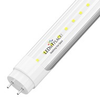1. Introduction
In today's educational environment, lighting plays a crucial role in creating conducive learning spaces. This article explores the significance of lighting in schools and the types of lighting commonly used.
2. Importance of Lighting in Schools
2.1 Enhancing Learning Environment
Good lighting promotes better concentration, alertness, and academic performance among students.
2.2 Safety and Security
Proper lighting reduces the risk of accidents and enhances security within the school premises.
2.3 Psychological Impact
The right lighting can positively impact students' mood and behavior, fostering a more positive learning atmosphere.
3. Factors Influencing Lighting Choices
3.1 Energy Efficiency
Schools prioritize energy-efficient lighting solutions to reduce operational costs and environmental impact.
3.2 Visual Comfort
Lighting design considers glare reduction and uniform illumination to ensure students' visual comfort during study hours.
3.3 Flexibility and Control
Modern lighting systems offer programmable controls, allowing schools to adjust lighting levels according to specific activities or time of day.
4. Common Types of Lighting Used
4.1 LED Panel Lights
LED panel lights are popular for their energy efficiency, uniform illumination, and long lifespan. They provide even lighting distribution, making them suitable for classrooms and hallways.
4.2 LED Downlights
LED downlights are recessed fixtures that offer focused illumination. They are often used in libraries, laboratories, and auditoriums to highlight specific areas or objects.
4.3 T8 LED Tube Lights
T8 LED tube lights are frequently used in schools for their efficiency and brightness. They offer a cost-effective solution for large areas such as gymnasiums and cafeterias.
4.4 LED Troffer Lights
LED troffer lights are surface-mounted fixtures that provide uniform lighting. They are commonly installed in classrooms and offices for their energy efficiency and long lifespan.
4.5 T8 Integrated LED Tube Lights
T8 integrated LED tube lights combine the efficiency of LED technology with the convenience of integrated fixtures. They are easy to install and offer excellent illumination for classrooms and corridors.
5. Considerations for School Lighting Design
5.1 Color Temperature
The choice of color temperature affects the ambiance of the learning environment. Cooler temperatures promote focus and alertness, while warmer tones create a cozy atmosphere.
5.2 Natural Light Integration
Maximizing natural light through windows and skylights reduces reliance on artificial lighting and enhances students' connection to the outdoor environment.
5.3 Maintenance and Durability
Schools prioritize lighting fixtures that require minimal maintenance and have a long lifespan to minimize disruptions to the learning environment.
6. Conclusion
In conclusion, the type of lighting used in schools significantly impacts students' learning experience, safety, and well-being. By prioritizing energy-efficient, visually comfortable, and flexible lighting solutions, schools can create optimal learning environments conducive to academic success.
7. FAQs (Frequently Asked Questions)
Q1: Are LED panel lights expensive to install in schools?
LED panel lights may have a higher upfront cost compared to traditional lighting options, but their energy efficiency and long lifespan result in cost savings over time.
Q2: Can schools customize lighting settings based on different activities?
Yes, modern lighting systems offer programmable controls, allowing schools to adjust lighting levels for various activities such as lectures, group discussions, or presentations.
Q3: How does natural light integration benefit school environments?
Natural light integration not only reduces energy consumption but also enhances students' well-being by providing exposure to daylight, which is known to positively impact mood and productivity.
Q4: What are the maintenance requirements for LED lighting in schools?
LED lighting requires minimal maintenance compared to traditional lighting options, reducing the need for frequent bulb replacements and maintenance costs.
Q5: Are there any safety considerations when installing lighting in schools?
Schools should ensure that lighting fixtures meet safety standards and regulations to prevent potential hazards such as electrical shocks or fire risks.

























































































